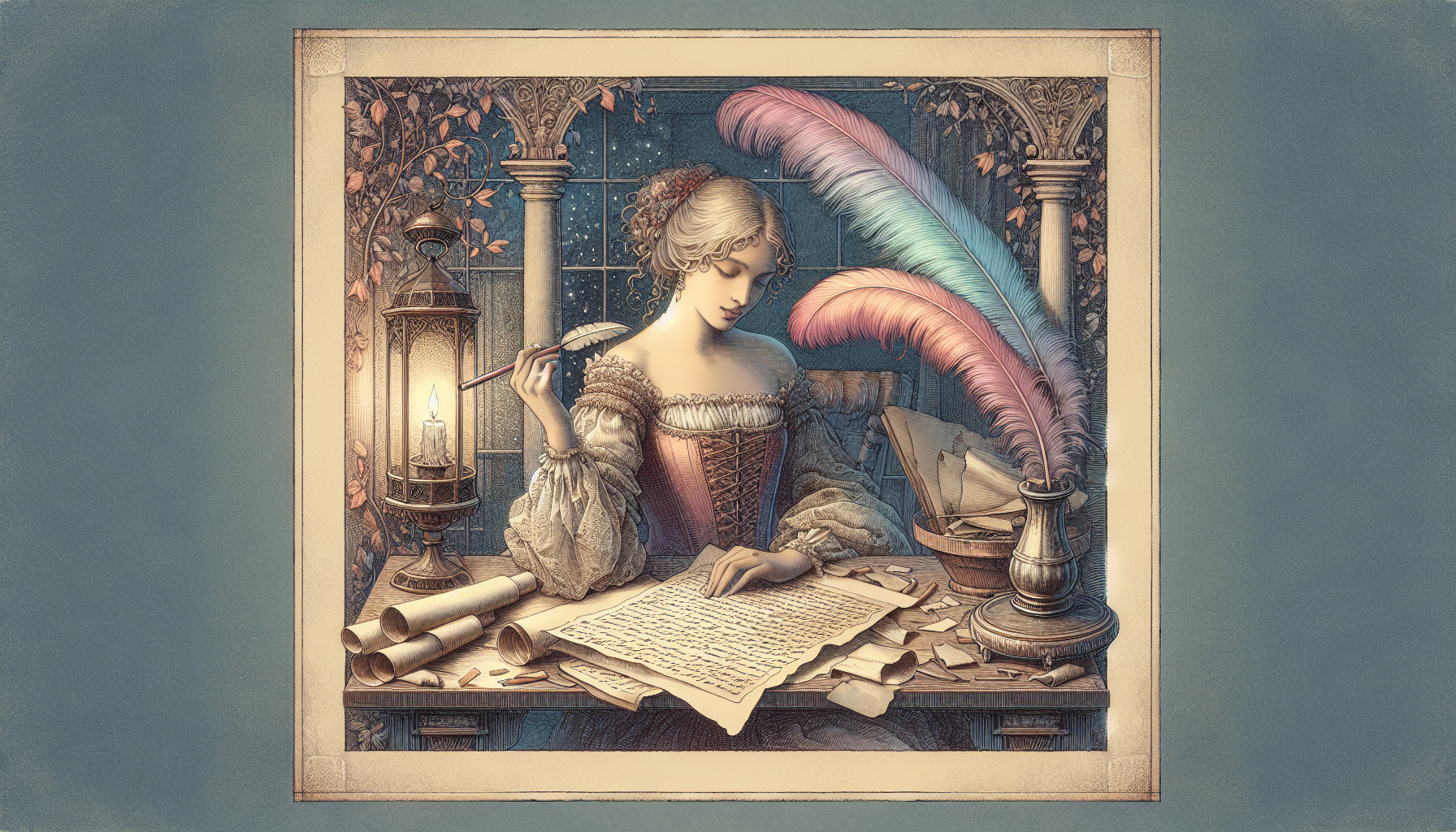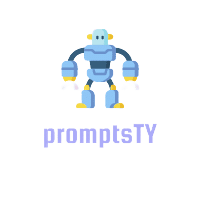Creating compelling characters can be a real challenge. You might find yourself staring at a blank page, wondering how to breathe life into your characters and make them feel real and relatable. You’re definitely not alone in this struggle!
But don’t worry—if you stick around, I’ll share some essential prompts that can spark your creativity and help you develop well-rounded characters that leap off the page. You’ll discover tools to explore their backgrounds, motivations, relationships, and so much more.
By the end of this journey, you’ll be equipped with a treasure trove of ideas to create characters that resonate deeply with your readers. Let’s get started on crafting your unforgettable cast!
Key Takeaways
- Use specific prompts to develop your character’s backstory, values, and goals.
- Understanding a character’s history helps shape their behavior and motivations.
- Unique traits make characters memorable; mix positive and negative characteristics.
- Character relationships are key to conflict and growth; explore alliances and rivalries.
- Plan a character arc to track growth and transformations throughout the story.
- Crafting dialogue reveals personality and advances the plot effectively.
- Flaws and challenges make characters relatable and drive the story forward.

Essential Prompts for Character Development
If you’re diving into character development, having the right prompts can make all the difference.
Here are some essential character prompts that will steer your creative writing in the right direction:
- Create a detailed backstory for your character, including their upbringing and key life events.
- Describe your character’s core values and how these influence their actions.
- List three major obstacles your character has faced and how they’ve coped with them.
- Imagine your character’s ideal life five years from now. What do they envision?
- Write a scene where your character confronts their biggest fear.
Use these prompts to engage with ChatGPT:
- “Generate a detailed backstory for a character who grew up in a small town but dreams of becoming a world traveler.”
- “What are the three main values that motivate a character who is a humanitarian?”
- “What challenges does a character who has always been a perfectionist face in their professional life?”
Understanding Your Character’s Background
Understanding your character’s background is crucial for creating a well-rounded individual.
Their history shapes who they are today, influencing their behaviors, motivations, and relationships.
Consider these points when developing their backstory:
- What significant events shaped your character’s childhood?
- How did their parents or guardians influence their personality?
- What defining moments in their life have led them to their current situation?
Some ChatGPT prompts to explore character history could be:
- “Describe a significant childhood event that shaped a character’s fears and aspirations.”
- “What life lessons did a single parent impart to their child that influence their decisions as an adult?”
Defining Character Goals and Motivations
Your character’s goals and motivations are the driving force behind their actions.
Understanding these elements makes your character relatable and provides conflict for your story.
Here are a few ways to define their ambitions:
- Identify what your character wants most. Is it love, success, or acceptance?
- What immediate and long-term goals do they have?
- What internal or external factors are driving these ambitions?
Try these prompts with ChatGPT:
- “Outline three major goals for a character trying to overcome a past trauma.”
- “What does a character desire most, and what sacrifices are they willing to make for it?”
Crafting Unique Character Traits
Unique character traits make your characters stand out and feel real.
To craft these traits, think about a mix of both positive and negative characteristics.
Here are some tips to develop distinctive characteristics:
- Identify quirks that set your character apart, like a unique hobby or an unusual mannerism.
- Consider how their personality traits play into their interactions with others.
- Mix contrasting traits to create depth—think of a character who is both charming and arrogant.
Here are some prompts you can use with ChatGPT:
- “Create a character with a unique hobby that influences their story, like a passion for urban gardening.”
- “Describe how a character’s stubbornness impacts their relationships with friends.”

Exploring Character Relationships
Relationships are at the heart of storytelling, shaping conflicts, alliances, and character growth.
Understanding how your character interacts with others can add depth to their personality.
Here are some key factors to consider when developing character relationships:
- Who are your character’s closest allies and what binds them together?
- What rivalries or tensions exist, and how do they impact your character’s journey?
- How do past experiences influence current relationships? Think about shared histories.
To see how these dynamics unfold, try these prompts with ChatGPT:
- “Describe a pivotal moment that strengthened the bond between two characters.”
- “What unresolved conflict exists between a character and their estranged parent, and how does it affect their actions?”
Building Character Arcs and Growth
A character arc maps out the transformation your character undergoes throughout the story.
A well-structured arc is essential for making your character’s journey compelling and relatable.
Here are some steps to consider when creating a character arc:
- Define your character’s starting point and their initial traits or flaws.
- Identify the key events or challenges that will force them to change.
- Envision their end point—how does your character evolve by the story’s conclusion?
Utilize these prompts to enhance your character’s transformation through ChatGPT:
- “Outline a character arc for someone who starts as a selfish individual but learns the value of community.”
- “What is a major turning point in a character’s journey that leads them to confront their deepest fears?”
Using Dialogue to Develop Characters
Dialogue is a powerful tool for revealing character personality and advancing the plot.
Authentic dialogue can shed light on your character’s motivations and relationships.
When crafting dialogue, consider the following tips:
- Give your characters distinct voices that reflect their backgrounds and personalities.
- Use subtext to convey emotions and motives, allowing characters to say one thing while meaning another.
- Pay attention to speech patterns, sentence structure, and language choices that fit each character.
Here are some prompts to create compelling dialogue using ChatGPT:
- “Write a conversation between two characters where one reveals a secret that changes their relationship forever.”
- “Generate a dialogue scene that highlights a character’s wit and sarcasm while discussing a serious topic.”
Creating Flaws and Challenges for Characters
Flaws make characters relatable and create opportunities for growth and conflict.
Every great character has imperfections, which can be used to drive the story forward.
When designing flaws, consider these approaches:
- Identify a flaw that poses obstacles for your character, whether it’s impulsiveness, jealousy, or fear of commitment.
- Consider how this flaw impacts your character’s relationships and decisions.
- Think about the challenges that arise from their flaws, and how they might learn to overcome them.
Use these prompts to explore character flaws with ChatGPT:
- “Outline a character whose obsession with control creates tension in their personal and professional life.”
- “Describe a challenge a character faces due to their extreme shyness and how they navigate it.”

Visualizing Your Character’s Appearance
Visualizing your character’s appearance helps ground them in the reader’s mind.
A well-defined look can add layers to their personality and can inform how they interact with the world.
When crafting your character’s appearance, consider these aspects:
- What is your character’s age, and how does it reflect in their appearance?
- Describe distinctive physical traits—eye color, hair type, and height—that set them apart.
- What is their typical style of dress, and how does it reflect their personality or background?
To build a vivid image, use these prompts with ChatGPT:
- “Describe a character with an unusual appearance that causes others to react differently towards them.”
- “Outline the physical features of a character who has experienced significant hardships, reflecting their journey.”
Incorporating Feedback to Refine Characters
Incorporating feedback is crucial for refining your characters into more relatable and complex individuals.
Getting different perspectives can highlight areas for improvement you may not have considered.
To effectively use feedback, keep these tips in mind:
- Seek feedback from peers who understand the genre and can provide specific insights.
- Ask targeted questions to guide your readers on what aspects of the character you want feedback on.
- Be open to constructive criticism and consider how it can enhance your character’s depth.
Here are prompts to utilize when asking for feedback through ChatGPT:
- “What are the strengths and weaknesses of my character’s motivation in this scene?”
- “How does this character’s dialogue reflect their personality? Suggest improvements.”
Examples of Character Development Prompts
Having concrete examples can inspire your character development process.
Here’s a collection of engaging prompts to kickstart your creative thinking:
- “Develop a character with a passion for art who struggles with self-doubt and how it affects their relationships.”
- “Create a character who has a tense relationship with authority and how that shapes their decisions.”
- “Write about a character who is forced to confront their childhood trauma during a family reunion.”
- “Imagine a character who has a secret talent that no one else knows about. What happens when it gets revealed?”
- “Craft a character who is a natural leader but also struggles with trusting others. How do they navigate teamwork?”
FAQs
Essential prompts include understanding a character’s background, defining their goals and motivations, crafting unique traits, exploring relationships, and identifying challenges. These prompts help create well-rounded and relatable characters.
To define your character’s motivations, consider their desires, fears, and aspirations. Ask what drives them forward and what obstacles they face. This clarity will influence their decisions throughout the story.
Flaws make characters relatable and realistic. They create internal and external conflicts that drive character growth. By overcoming these flaws, characters can evolve, which enriches the storyline.
Feedback offers valuable perspectives on your character’s authenticity and relatability. It helps identify inconsistencies or areas needing development and facilitates a more engaging character journey.
